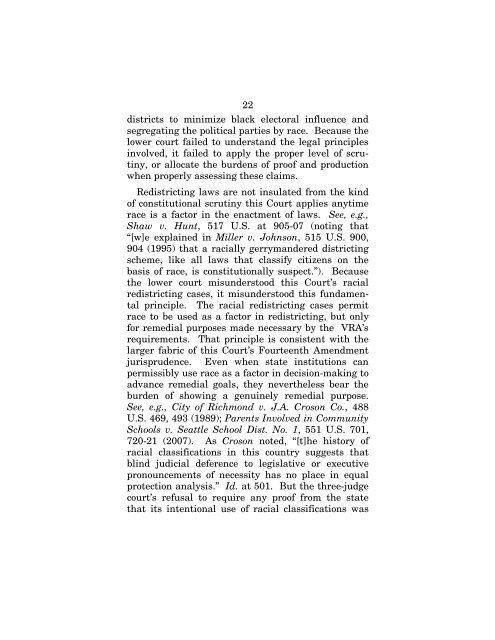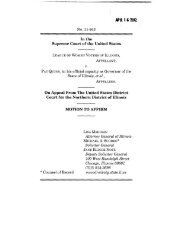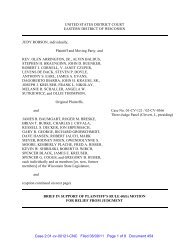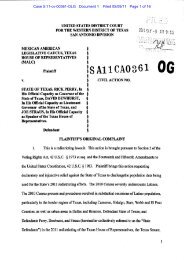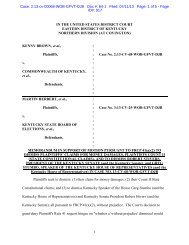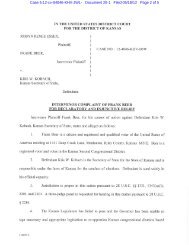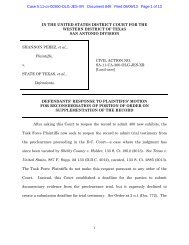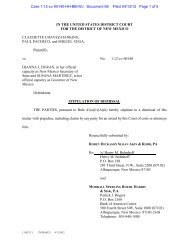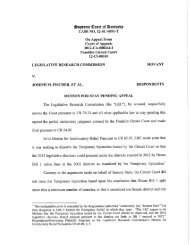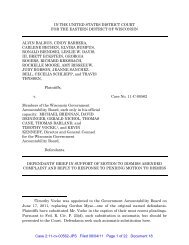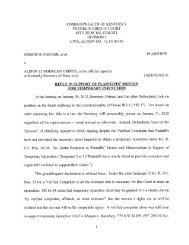Jurisdictional statement - About Redistricting - Loyola Law School
Jurisdictional statement - About Redistricting - Loyola Law School
Jurisdictional statement - About Redistricting - Loyola Law School
You also want an ePaper? Increase the reach of your titles
YUMPU automatically turns print PDFs into web optimized ePapers that Google loves.
22<br />
districts to minimize black electoral influence and<br />
segregating the political parties by race. Because the<br />
lower court failed to understand the legal principles<br />
involved, it failed to apply the proper level of scrutiny,<br />
or allocate the burdens of proof and production<br />
when properly assessing these claims.<br />
<strong>Redistricting</strong> laws are not insulated from the kind<br />
of constitutional scrutiny this Court applies anytime<br />
race is a factor in the enactment of laws. See, e.g.,<br />
Shaw v. Hunt, 517 U.S. at 905-07 (noting that<br />
“[w]e explained in Miller v. Johnson, 515 U.S. 900,<br />
904 (1995) that a racially gerrymandered districting<br />
scheme, like all laws that classify citizens on the<br />
basis of race, is constitutionally suspect.”). Because<br />
the lower court misunderstood this Court’s racial<br />
redistricting cases, it misunderstood this fundamental<br />
principle. The racial redistricting cases permit<br />
race to be used as a factor in redistricting, but only<br />
for remedial purposes made necessary by the VRA’s<br />
requirements. That principle is consistent with the<br />
larger fabric of this Court’s Fourteenth Amendment<br />
jurisprudence. Even when state institutions can<br />
permissibly use race as a factor in decision-making to<br />
advance remedial goals, they nevertheless bear the<br />
burden of showing a genuinely remedial purpose.<br />
See, e.g., City of Richmond v. J.A. Croson Co., 488<br />
U.S. 469, 493 (1989); Parents Involved in Community<br />
<strong>School</strong>s v. Seattle <strong>School</strong> Dist. No. 1, 551 U.S. 701,<br />
720-21 (2007). As Croson noted, “[t]he history of<br />
racial classifications in this country suggests that<br />
blind judicial deference to legislative or executive<br />
pronouncements of necessity has no place in equal<br />
protection analysis.” Id. at 501. But the three-judge<br />
court’s refusal to require any proof from the state<br />
that its intentional use of racial classifications was


